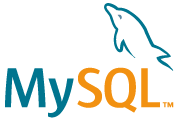MySQL Router is part of InnoDB cluster, and is lightweight middleware that provides transparent routing between your application and back-end MySQL Servers. It can be used for a wide variety of use cases, such as providing high availability and scalability by effectively routing database traffic to appropriate back-end MySQL Servers. The pluggable architecture also enables developers to extend MySQL Router for custom use cases.
- MySQL Router 8.0 (tag:
latest,8.0) (mysql-router/8.0/Dockerfile)
Images are updated when new MySQL Server maintenance releases and development milestones are published. Please note that non-GA releases are for preview purposes only and should not be used in production setups.
The image currently uses the following mandatory variables:
| Variable | Description |
|---|---|
| MYSQL_HOST | MySQL host to connect to |
| MYSQL_PORT | Port to use |
| MYSQL_USER | User to connect with |
| MYSQL_PASSWORD | Password to connect with |
Running in a container requires a working InnoDB cluster.
The image uses the following optional variables:
| Variable | Description |
|---|---|
| MYSQL_INNODB_CLUSTER_MEMBERS | Wait for at least this number of cluster instances to be ONLINE |
| MYSQL_CREATE_ROUTER_USER | Whether to create a new account for the Router to use when it's running. Defaults to 1, set to 0 to disable. |
| MYSQL_ROUTER_BOOTSTRAP_EXTRA_OPTIONS | Additional command line options applied while bootstrapping |
If supplied the run script waits for the given mysql host to be up, the InnoDB cluster to have MYSQL_INNODB_CLUSTER_MEMBERS members and then uses the given server for its bootstrap mode Bootstrapping.
The image can be run via:
docker run -e MYSQL_HOST=localhost -e MYSQL_PORT=3306 -e MYSQL_USER=mysql -e MYSQL_PASSWORD=mysql -e MYSQL_INNODB_CLUSTER_MEMBERS=3 -ti mysql/mysql-router
Additional command line options for running MySQL Router after bootstrap can be passed a command options. For instance you can use a config file from your home directory like this:
docker run -e MYSQL_HOST=localhost -e MYSQL_PORT=3306 -e MYSQL_USER=mysql -e MYSQL_PASSWORD=mysql -ti -v $HOME/router-extra.conf:/tmp/router-extra.conf mysql/mysql-router mysqlrouter --extra-config=/tmp/router-extra.conf
It can be verified by typing:
docker ps
The following output should be displayed:
4954b1c80be1 mysql-router:8.0 "/run.sh mysqlrouter" About a minute ago Up About a minute (healthy) 6447/tcp, 6448/tcp, 0.0.0.0:6446->6446/tcp, 6449/tcp innodbcluster_mysql-router_1
By default the container will run as user 999:999 which maps to mysqlrouter:mysqlrouter inside the container.
The following TCP ports are exposed by the MySQL Router container:
| Port | Description |
|---|---|
| 6446 | R/W connection port. Clients that connect to this port will be forwarded to the PRIMARY |
| 6447 | R/O connection port. Clients that connect to this port will be forwarded to a SECONDARY |
| 6448 | X Protocol R/W connection port. R/W port for X protocol client connections |
| 6449 | X Protocol R/O connection port. R/O port for X protocol client connections |
| 8443 | HTTPS REST interface port. |
For more information about the REST interface API, see:
https://dev.mysql.com/doc/mysql-router/8.0/en/mysql-router-rest-api-reference.html
For full usage documentation, see:
https://dev.mysql.com/doc/mysql-router/8.0/en/mysql-router-installation-docker.html
